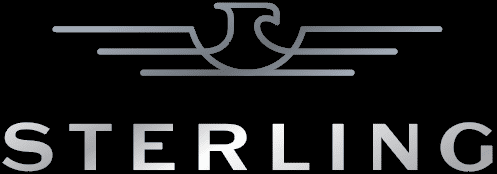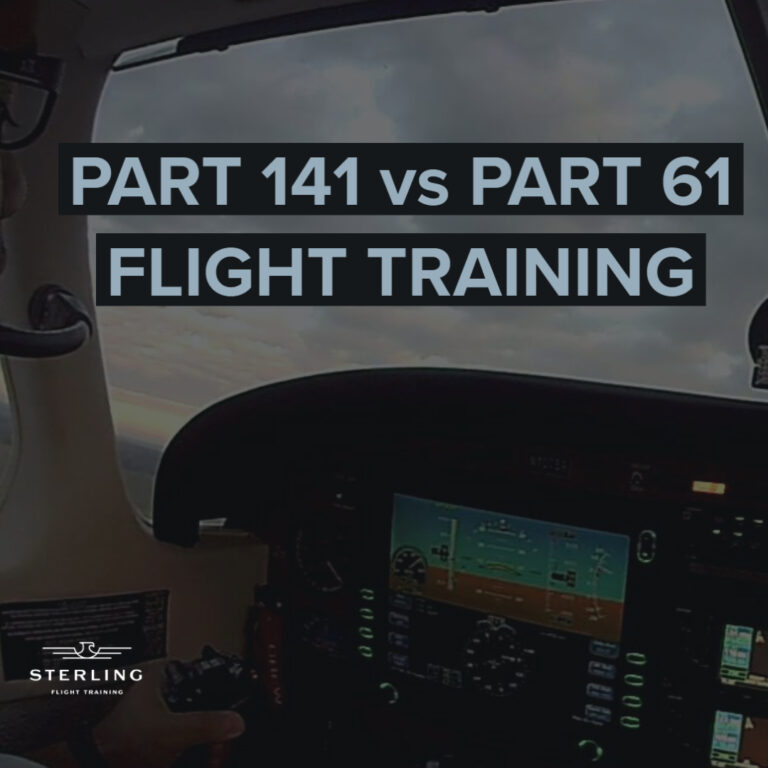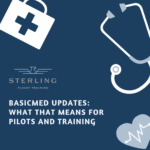As you begin researching flight schools you are going to come across the terms Part 141 and Part 61. So, what does that mean, and which should you choose for your flight training? Ultimately, it depends on what your personal goals are.
The term “Part” refers to the Federal Aviation Regulations or FARs. Part 61 is all about the certification of pilots while Part 141 refers to the regulations for flight training schools and curriculum.
While Part 61 training can be offered by any certified flight instructor, Part 141 instruction can only be offered at FAA approved flight schools that meet the requirements for this regulation.
At Sterling we offer both Part 141 and Part 61 programs, giving you flexibility in your training options. But what are the differences between these two paths?
Fewer Hours & Cost
One of the most notably visible differences between Part 141 and Part 61 training is the minimum hours required to meet your certifications. For example, under Part 61 the minimum number of hours for a private pilot is 40, while Part 141 requires only 35. For students who excel in their training, this means you can progress faster and for less money. While five hours may not seem like that much of a difference, for students that are pursuing commercial pilot ratings the difference in minimum requirements is closer to 60 hours.
GI Bill
Servicemembers, veterans and their families that have GI Bill benefits available can use those toward flight training costs, but only if enrolled in a Part 141 flight training program. While benefits cannot be used toward a private pilot license, students wishing to pursue further ratings and certifications can receive funding toward this training. Sterling also offers all active military and veterans a 10% discount.
Professional vs. Recreational
While both programs teach the same requirements under FAA Airman Certification Standards, your end goal may factor into your decision to choose Part 141 or Part 61 instruction. The structured curriculum of a Part 141 program is often better for a full-time student whose goal is to become a professional airline pilot, or recreational pilots that want to complete their training quickly. Part 61 training offers more flexibility, so it is typically best for part-time students or those unable to keep a regular flight training schedule.
FAA Approved Curriculum
Part 141 flight training programs adhere to a strictly defined curriculum approved by the FAA. In addition to the curriculum, the FAA monitors facilities, equipment, instructors, lesson plans and requires a minimum passing rate for the school to maintain their status. Stage checks are also required under Part 141 training to evaluate a student’s progress before moving on or being approved for their end of course check ride with a Designated Pilot Examiner (DPE).
International Students
Students wishing to undergo flight training in the US will need to obtain an M-1 or F-1 Student Visa. As an international student, you must study at an FAA Part 141 flight school, according to US Government Regulations. Sterling will only accept M-1 Visas.
Ready to get started with your flight training? Apply to one of our programs today.





